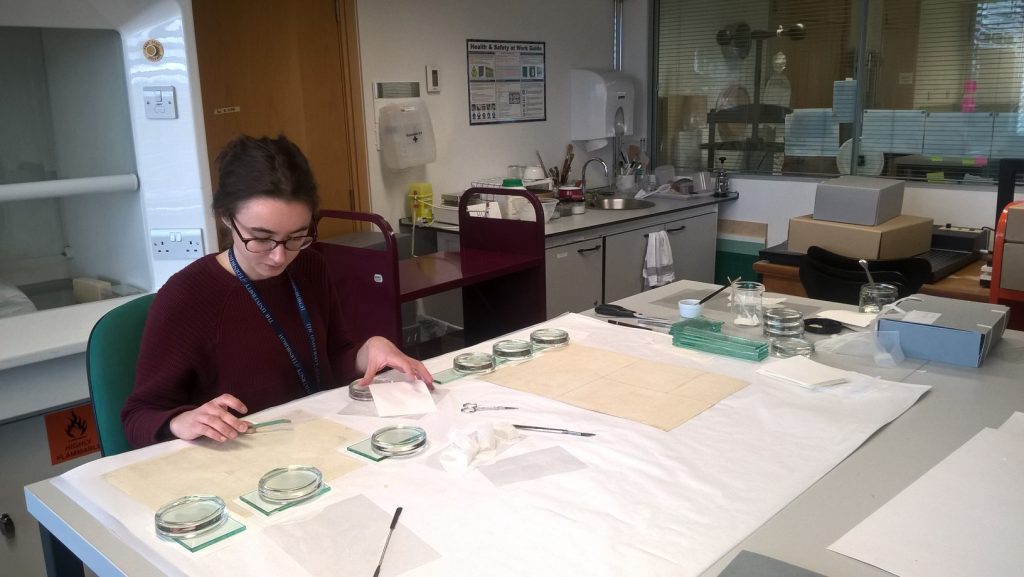Our final Thomson-Walker intern introduces herself in this week’s blog post….
“I feel like a pastry chef!”: this was my first thought while trying to smear an even layer of a carboxymethylcellulose (CMC) poultice on a strip of lens tissue to remove a very thick residue of what distinctively smelled like coccoina (a marzipan-scented Italian glue, made from potato starch and almond paste). Being Italian, I couldn’t help but recognise the fragrance bringing back so many childhood memories. I didn’t imagine, back then, how difficult it actually is to remove this adhesive from the back of a 17th century print!

